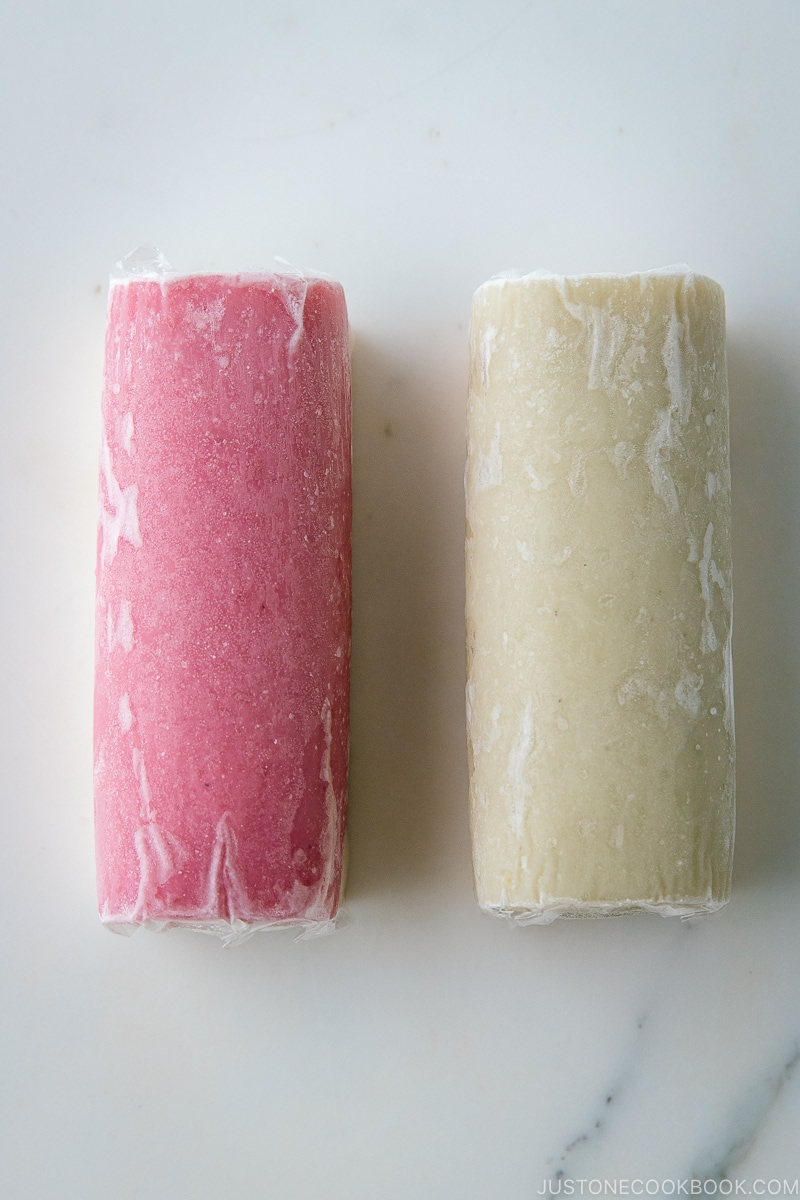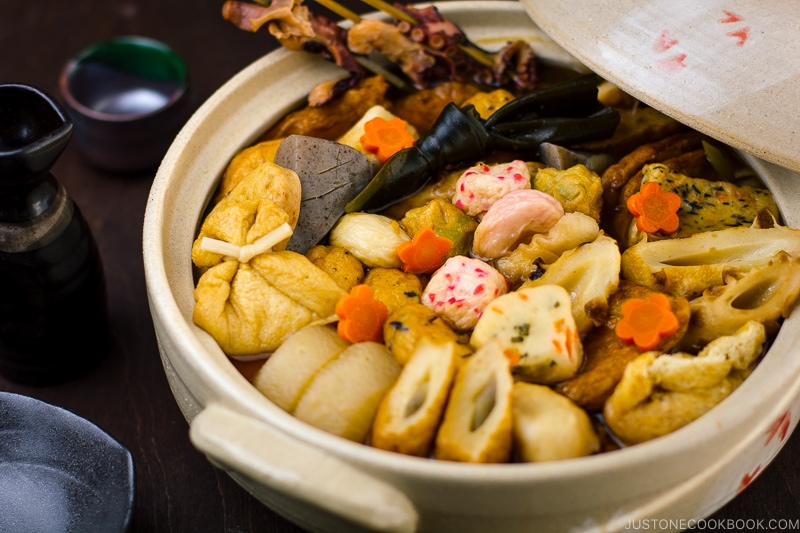Kamaboko is a ground fish paste formed and steamed into semi-cylindrical loaves. It has a rich history and is served on celebratory occasions and everyday meals.

Kamaboko (蒲鉾, かまぼこ), or Japanese fish cake, is a processed seafood product eaten in Japanese cuisine. It consists of pureed white fish paste (surimi すり身) that’s steamed, grilled, or fried until cooked and firm. You can eat it as is, cut it into a beautiful pattern, or use it as a garnish.
Table of contents
What Is Kamaboko
Kamaboko is a Japanese fish cake with surimi paste (white fish). Surimi may contain a blend of cod, Golden threadfin bream, gnomefish, gruntfish, lizardfish, and Japanese bluefish.
It comes in various shapes, forms, textures, and regional specialties. The Japanese eat it as a topping to noodle or hot pot dishes or as a protein in stir-fries and salads. When grilled, they have a toasty flavor.
The production process involves mixing different white fish types, pulverizing the meat into a gelatinous, smooth paste, and seasoning the mixture with salt, flour, sake, and egg whites before steaming or grilling.
It is low in calories and fat but high in sodium.
What Does It Taste Like
It has a mild and sweet taste and does not taste fishy. It tastes similar to imitation crab meat (kanikama カニカマ), which consists of surimi.
A Long History of Food Preservation
The history goes back to the Heian period (8th century). Initially, it was ground fish meat wrapped around a bamboo stick and chargrilled. As it resembled the head of a cattail (gama no ho 蒲の穂) and a long spear (hoko 鉾), it was called “kabahoko,” which later evolved into “kamaboko.”
National Kamaboko Day falls on November 15th, a nod to the earliest known illustration of kamaboko served at a celebratory feast for the Minister of the Right in 1115.
Read more about it on a fun tour at the Suzuhiro Kamaboko Museum in Odawara.

Varieties
The most common types are red kamaboko (赤かまぼこ) and white kamaboko (白かまぼこ). It’s made by forming, steaming, and molding the fish paste on a small wooden board. It resembles a semi-cylindrical white mass.

Red kamaboko is white on the inside with a striking pink outer layer. It is a topping for noodle dishes such as udon and soba. In the Japanese culture, red and white are considered auspicious colors. You will see these fish cakes at celebratory meals, such as Osechi Ryori.

Learn how to make decorative cuts 7 beautiful designs to cut Japanese fish cake.

Narutomaki, or Naruto fish cakes, is another famous fish cake with a pink spiral pattern. Slice thinly and top over noodle soups.

Chikuwa is a long, tube-shaped fish cake with grill marks. It’s delicious in oden. In Japan, you can find chikuwa at convenience stores or high-quality chikuwa on the food floor of departmental stores.
There’s a huge variety when you count regional styles, but other types include
- Jakoten (じゃこ天、fried kamaboko with jako)
- Chīkama (チーカマ、cheese kamaboko)
- Sasa-kamaboko (笹かまぼこ、 formed in the shape of bamboo leaves).
Recipes Featuring Kamaboko Fish Cakes
Where To Buy
Find it at Japanese and Asian grocery stores. Look for it in the refrigerator or freezer section.
How To Choose The Best
While options may be limited outside of Japan, try to find high-quality kamaboko without MSG, additives, or preservatives.
Wish to learn more about Japanese cooking? Sign up for our free newsletter to receive cooking tips & recipe updates! And stay in touch with me on Facebook, Pinterest, YouTube, and Instagram.














